Whether your office is in a fancy business park or it’s just at your home, one thing is certain: there’s nothing duller than sitting at a sad, uninteresting desk on a Monday morning. Solution? Embrace the design of your desk in a way that inspires and excites you and what’s better than involving some freshness with indoor best plants for your office. This office decor idea is also backed by researchers, according to the employees in workplaces with one per square meter plant density scored better on memory tests and other fundamental skills needed to work.
But you don’t know where to start? We’ve collected a list of fresh, low-maintenance plants that can endure low light and flourish in areas that are suitable choices for the offices.
1. The Evergreen Bonsai

They are cute little plants, Bonsai is an interesting tiny wonder that doesn’t mature until they’re at least 12 years old, but they’re super easy to grow from seed kits. Bonsai aren’t only great additions to home office tables and office desks, they may also turn into a lifelong hobby. Bonsai plants are well-known for their ability to reduce stress. That is why it may be found adorning so many workplace desks. It helps to soothe one’s breathing.
2. The Multipurpose Aloe Vera

Plants in the aloe genus family, particularly aloe vera, are unquestionably the best choice for your offices and other workspaces. It’s a low-maintenance plant that has been shown to absorb benzene and formaldehyde from the atmosphere. In addition, the gel in the leaves has therapeutic properties, making the plant a must-have in your office spaces.
3. The Peaceful Peace lily

Peace lilies have stunning white blossoms and wide, broad, deep green foliage that give them their common name. These plants perform well as a focal point and as a screen. They’re popular plants in workspaces because they don’t require much light and are forgiving of over-watering. They are also recognized for cleansing the air, removing toxins, and creating a more pleasant working atmosphere. It’s a low-light tolerant plant that’s also a fast grower.
4. The Tough Dracaena

Dracaenas are some of the strongest plants, making them an excellent choice for pollutant removal from working spaces. Dracaena can withstand drought and has a persistent root structure that makes it difficult for it to wilt, making it ideal for a neglected desk plant. They’re not just strong, but their thin, frequently multicolored leaves also make a nice accent to your desk.
5. The Lucky Bamboo

One of the most interesting offices desk plants is the Lucky Bamboo. It’s also said to ward off evil spirits. They thrive on nothing but water and look lovely in clear vases or trays with pebbles. It prefers shelter to the sun and enjoys moist loam or sand added to its water.
6. The Fail-Proof Cactus
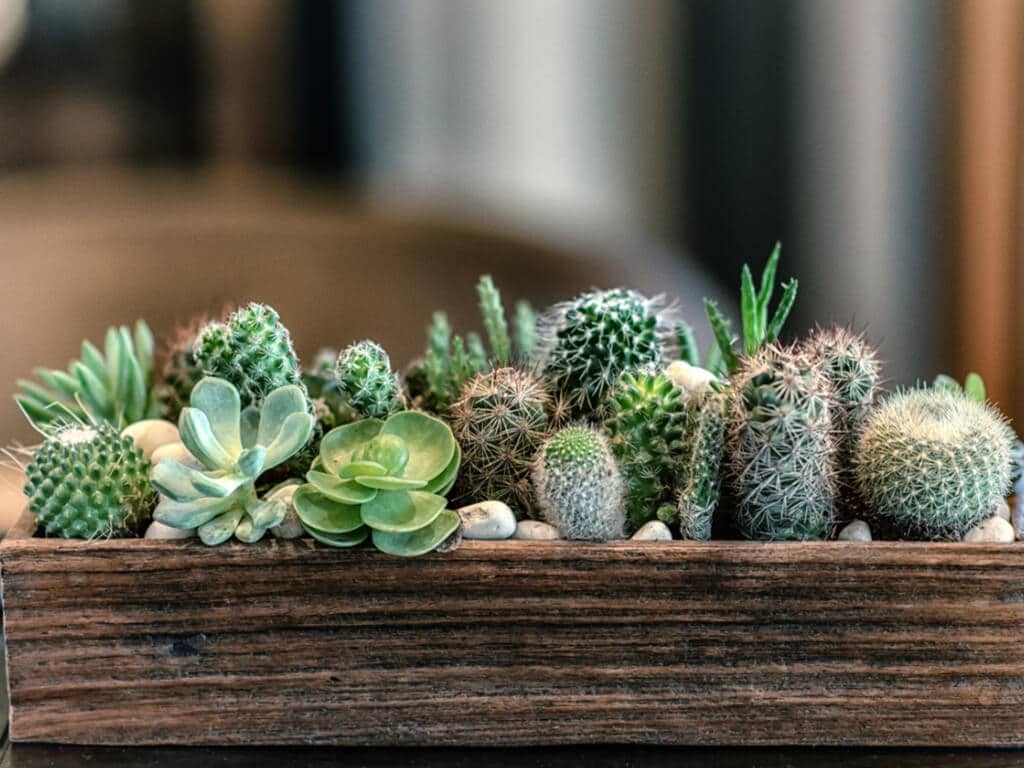
If you still can’t fix any of the above-mentioned plants, the faithful cactus comes to the rescue. Just make sure it’s at a place where no one will reach across your desk as it looks good only to see and not to touch. The cactus plant, found in dry, hostile deserts, is one of the few plants that can quite strongly survive neglect. It can hold a large amount of water, allowing it to endure even the most neglected watering habit. Cacti prefer more light, so try to place them near openings.
7. The Interactive Aglaonema
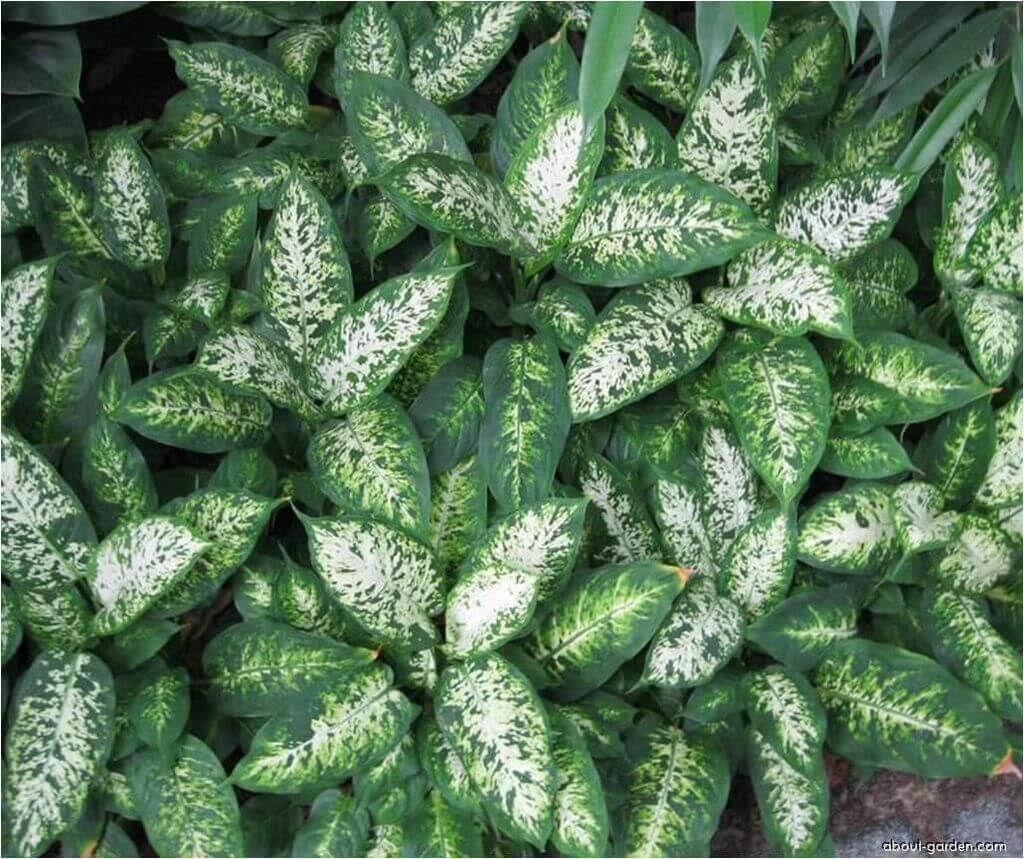
If you are someone who loves talking to your pet, in this case, the plant pet, the Aglaonema, with variegated leaves of green and white speckles, is a lovely option for these people. When they require watering viz once a week, these eye-catching office plants droop, but with enough watering and appropriate care, they rapidly recover. Thus making this plant highly communicative to its owner.
8. The Tolerant ZZ Plant
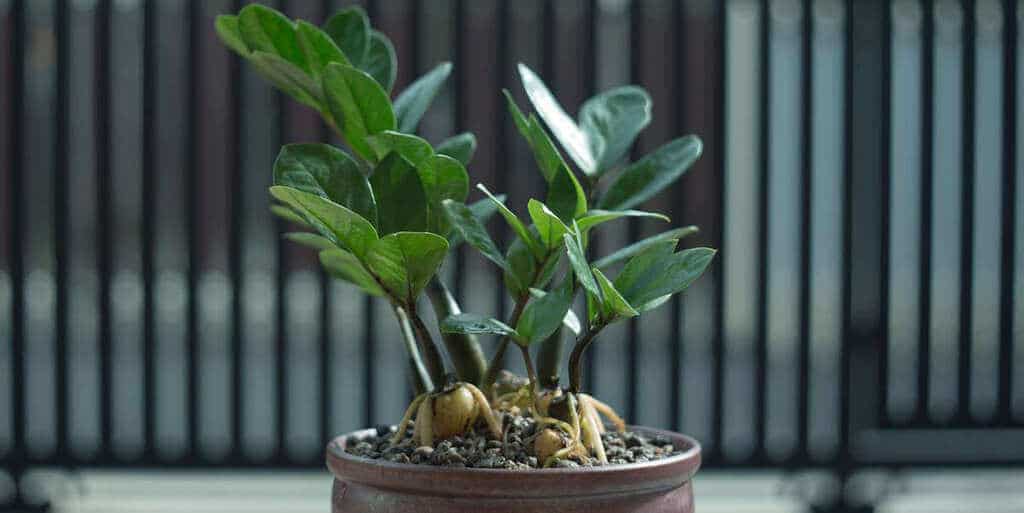
Because of its low light tolerance and capacity to grow with minimal water, this plant has become a favorite choice among office spaces. This is one of the best good luck plants for the office, and it’s native to Africa. It can also do great with artificial lighting like only fluorescent lamps for illumination. The plant can add a nice depth and pop of color to your desks with its laddered leaves.
9. The Cheerful Philodendron
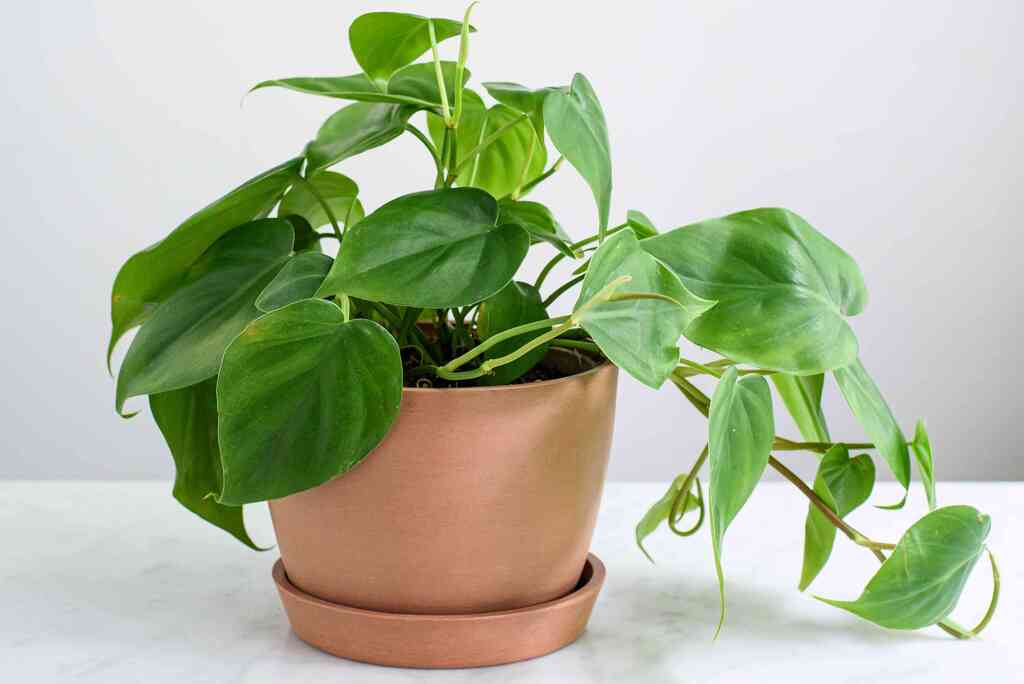
Since their discovery in South America, they have been a popular indoor plant for office spaces. The leaves are glossy and may keep their slick appearance even in the shade. They are perfect for offices since they may be utilized as a part of a large display or in the corner, either way giving your office a lush, tropical atmosphere.
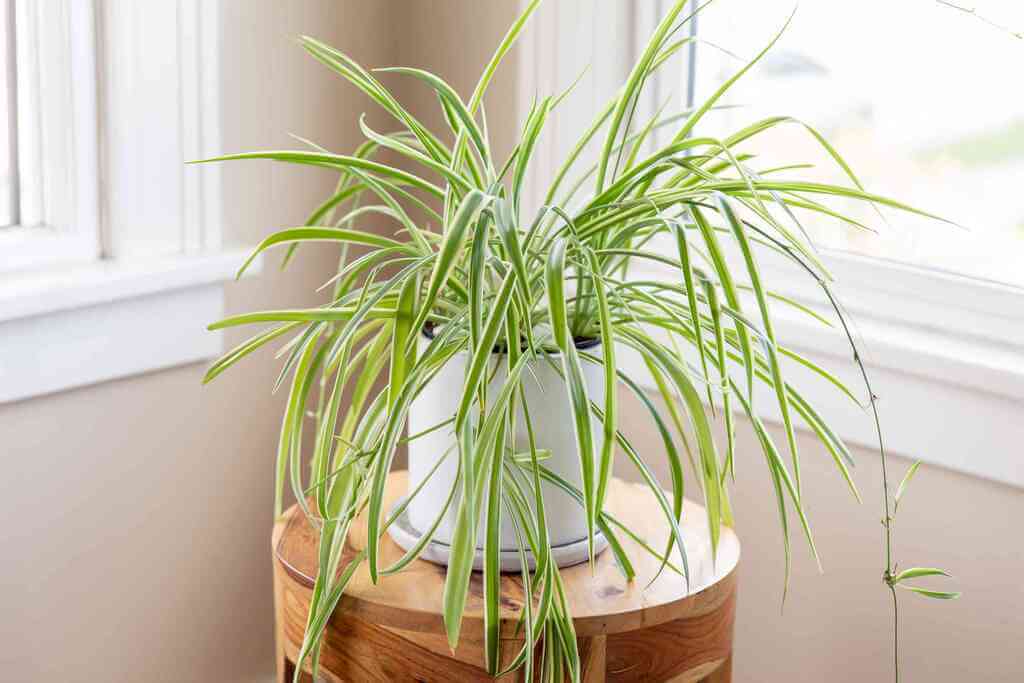
Spider Plants can go for several days without water. Plants prefer indirect light and will thrive even in a gloomy office environment. The spider-like leaves dangle down from the parent plant like spiders on a web, hence the name. Spider plants come in green or variegated variants, and they typically begin as little white blossoms.
10. The Versatile Ficus Benjamina
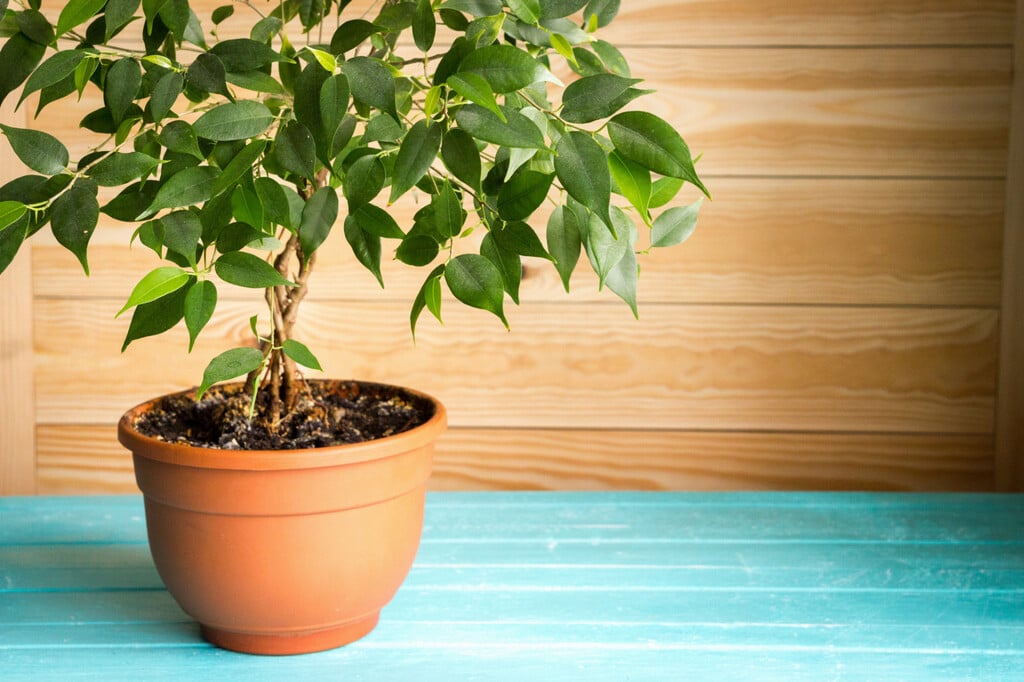
Ficus Benjamina, also as the weeping fig, is a versatile plant that looks great as a stand-alone specimen or in a mixed display. It gets its name from the Indian word Ben-ja. Young plants often sprout from seeds lodged in other trees’ branches, forming roots that stretch down to the surface ground. The Ficus grows around the stem of the host tree, eventually fusing to beautifully strangle it.
Tips to Effectively Use Indoor Plants in Your Workspaces
- Don’t move the plant around: It’s not always a smart idea to move plants around. Plants adapt to their surroundings, by changing their orientations they will struggle to adapt to their environment if they are often relocated from one desk to another.
- Work with artificial lighting: The biggest factor that aids in plant growth is natural illumination. However, in many of our workplaces, this isn’t feasible. So, place artificial sunlight bulbs next to the plants as an alternative.
- Switch pots according to the growth: As it grows, switch out the pots. A plant may look good in a little pot when you acquire it. However, as it grows, it may require a larger pot. By this, you can avoid limiting its growth.
- Be alert about the surroundings: You should keep an eye out for flies and other insects that could injure your indoor plants. You can opt for natural remedies to avoid this.
Final Thoughts!
Plants may make your workstation more serene, tranquil, and engaging. Choose one of these air-cleaning, mood-boosting species that are also nearly tough to kill to avoid looking at a sad plant on your desk.
So, if you are looking for office plants sydney and around, contact your nearby landscaping experts.
FAQs
The truth is that most plants marketed for indoor and office usage, particularly foliage plants, can thrive in the pale blue light that fluorescent lights emit. Look specifically for foliage plants that thrive indoors.
If you have blooming plants, you may require additional natural light; check the instructions tag that came with the plant to ensure that you are supplying the appropriate amount of water and quantity of light.
There are a few that don’t necessitate a lot of soil or area. Succulents, for example, necessitate a lot of light but come in small containers. Succulents are a wonderful choice if you have a large window area and want a lot of plants. They come in multiple colors and sizes, and because they are grown in little pots with little soil, you can grow them in good numbers at once.
Plants brought into an office may carry bugs with them. Fungus gnats are the most prevalent pest that indoor plants introduce. They’re little, and their main issue is that they can be annoying. Fungus gnats can be removed in a variety of ways using monitoring activity and possible infestations. Several fungus gnat traps can also be placed in potted plants that will attract the gnats.
Read more:-

